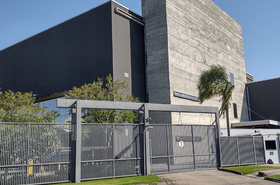As with any industry, the data center world must ebb and flow, and companies need to keep up with those transitions.
Aligned Data Centers is only too aware of this. At our Planning for Hybrid IT broadcast, we enjoyed a presentation from Aligned Data Centers’ Phill Lawson-Shanks, their CIO.
He ran us through the moves Aligned Data Centers has taken throughout the years to keep up with an industry that demands innovation and sustainability at every step of the way.
“For those of you who have been in the industry a long time, you know well the transition from the mainframe, to the mini, to the PC, the PC under the desk, the PC in a closet, then into a room, and finally, into a data center.
“As we've made that transition of the technology, and how we consume and use that technology, the platforms have obviously evolved as well. From those room-scale mainframes to minis, to now rooms and rooms of racks, cabinets of servers.
“Over the course of the last several years, we've seen dramatic changes in those particular servers. The introduction of the GPU several years ago changed a lot of the structure of how, as a data center provider, we were sustaining those platforms and giving our clients the ability to grow as they needed to.”
Drastic transformation in technology has coincided with uncompromisable demand for sustainability, a challenge that Aligned Data Centers has tackled head-on.
“We had some technology that we developed several years ago, which enabled us to cool at a very high density with 85 percent less water than traditional technologies. We've actually taken that a stage further now and moved to an entirely waterless system.
“Admittedly, waterless has been around a long time, particularly with DX cooling units.
“The downside of that technology is it uses an inordinate amount of power to cool. So from the outset, we elected to use different cooling technology.
“Using less power and zero water is the way to go. For those of you in the industry, you know that the PUE for a DX cooling unit with the best will in the world will give you an effectiveness rating of 2.5, which means you're using twice as much power to cool the IT load.”
While cooling methods have a significant contribution to the overall sustainability index of a facility, this is not the only consideration.
Sustainability draws on both how environmentally friendly a business is, but also how self-sustainable that business is too. With many companies struggling to balance demand and supply chains, a solution to this must also be considered.
“Several years ago, we took the view that we needed to own our supply chain. We pre-purchased 50 megawatts of capacity from generator suppliers, UPSs, switchgear, all of the components that you need to build.
“We've actually upped it to 130 megawatts that we own and maintain, either in finished goods or components to make finished goods, which has made a tremendous difference for how we can supply to meet demand
“We also took the view that we didn't want to have those components built on-site in our locations. Because with the best will in the world, if you've ever been around any building site, there will be a lot of waste.
“With so much copper, and aluminum, you're not going to be able to pick up all of those offcuts and shavings, and they will inevitably get onto the ground and leach into the water table, which we really don't want. So we took the view early on to factory-build all of our mechanical and electrical plants. It’s built in factories where we can control that environment, clean up and recycle that waste.
“We're tagging all our technologies with a marker called the origin mark. That gives us the ability to look at the specific carbon footprint and the circularity – the ability to recycle those components at the end of life, or when we do upgrades and transitions for every individual component.”
Perhaps, the most important thing that Aligned Data Centers is doing, is looking at their company from a multitude of perspectives.
“We see it as a whole. We can see where one particular unit is connected to all of the other upstream and downstream devices, and that's proving to have tremendous benefits to our operations team, as they have to go through their standard methods of procedure when we're doing operational maintenance.
“Everything we do is trackable and traceable at a granular level and also at a macro level. By the end of this year, we will have the ability to look at the carbon footprint of a particular implementation for a client for a data center, for a campus, or for a whole portfolio.”
This dynamism enables flexibility, and for Aligned to prioritize sustainability at its core.
Download the episode for a deeper look at Aligned Energy’s business model.





